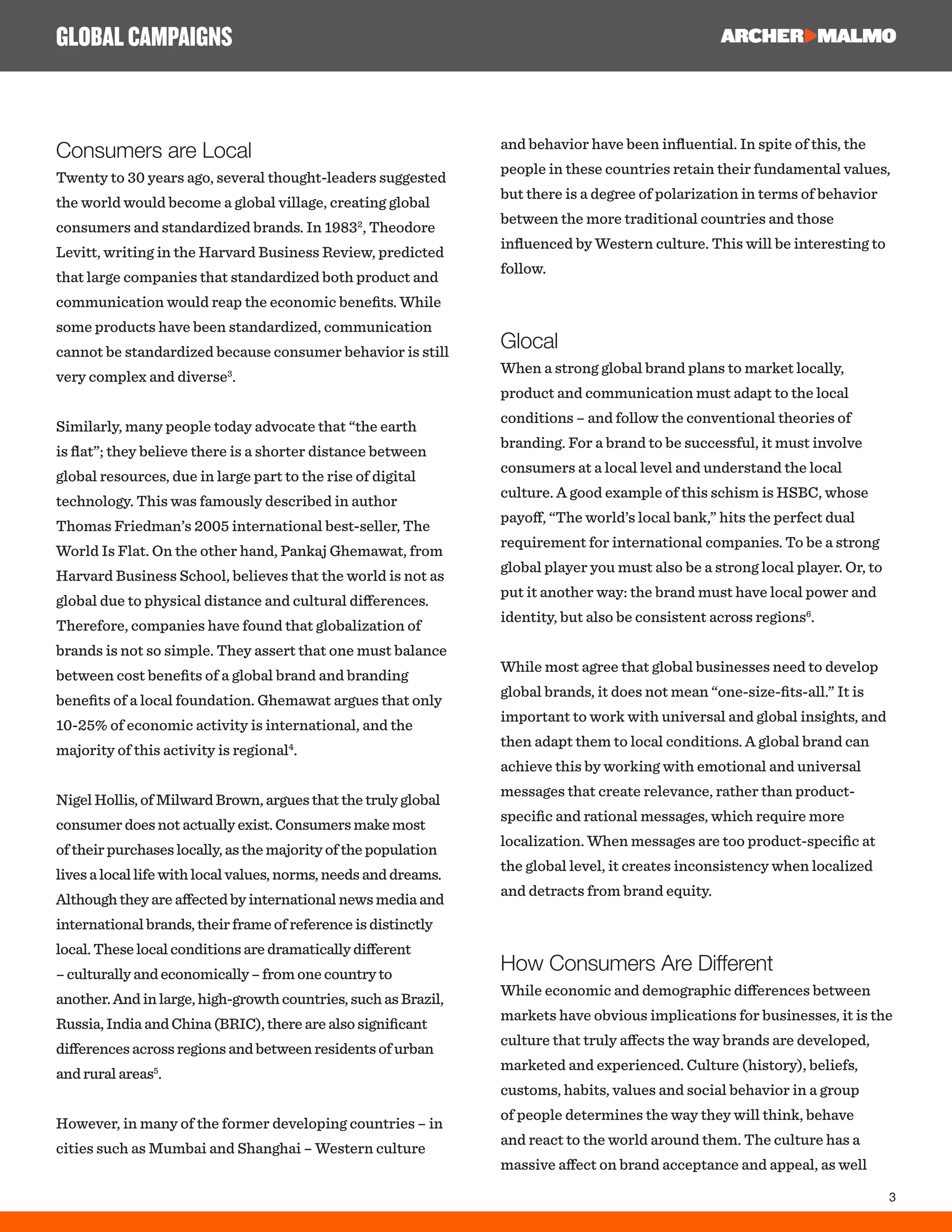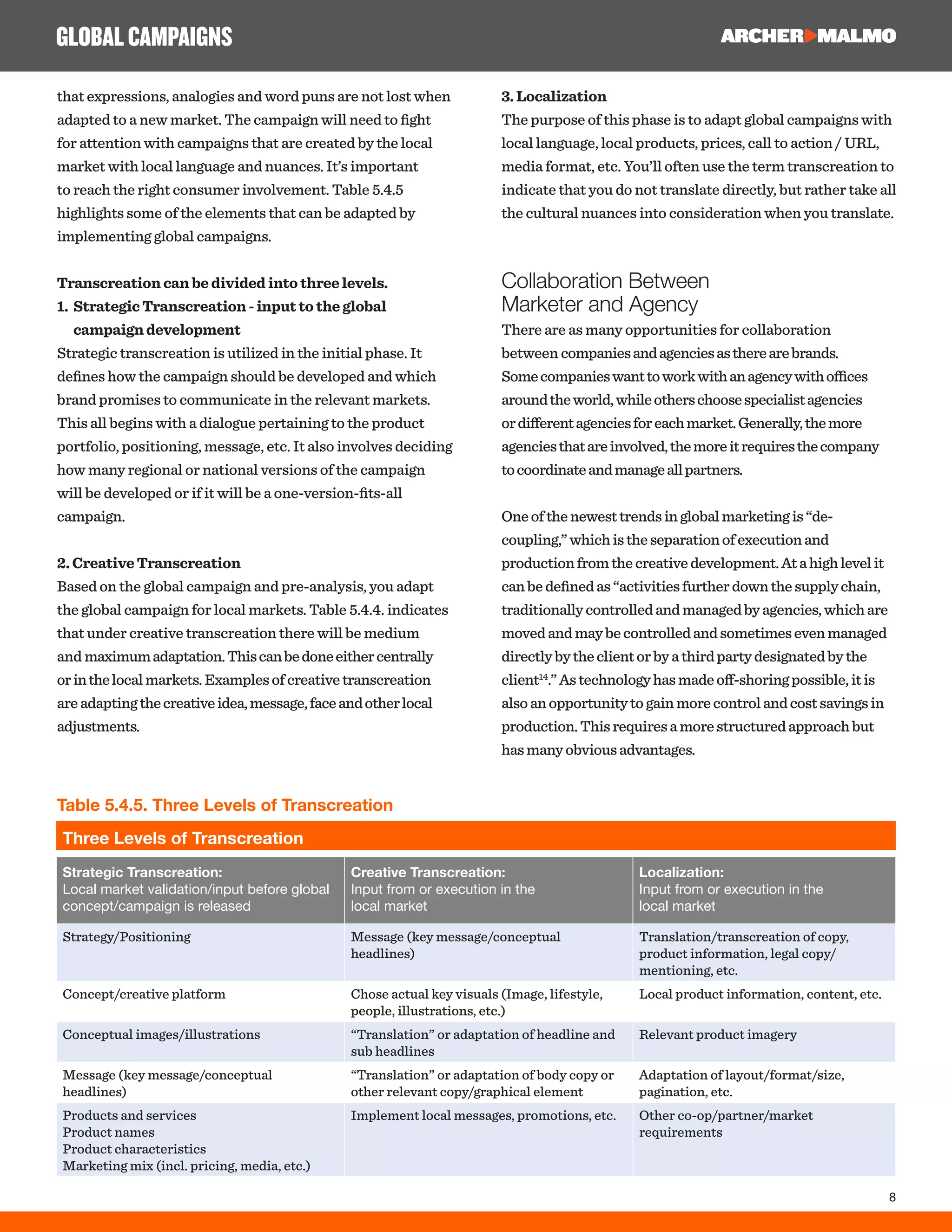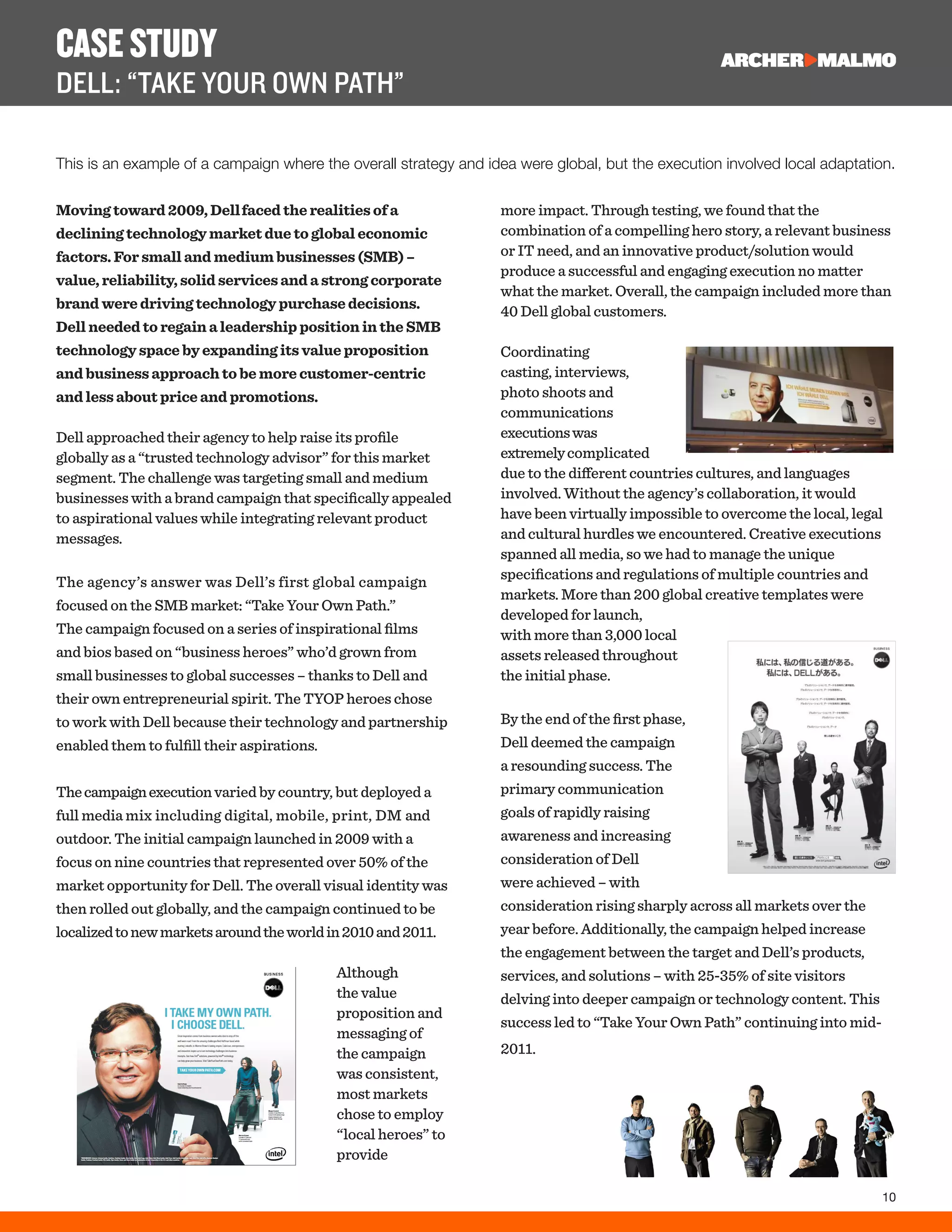- The document discusses the considerations and approaches for executing effective global marketing campaigns. While globalization has increased opportunities for standardized campaigns, consumer behavior remains diverse and local.
- Effective global campaigns require balancing standardized global elements with localization to different markets and cultures. There are varying degrees of localization, from fully standardized campaigns to those uniquely tailored for each local market.
- Key factors that determine the appropriate localization approach include cultural, economic, competitive and logistical differences between markets. Gathering local consumer insights and establishing clear brand guidelines are important for developing successful global campaigns.










